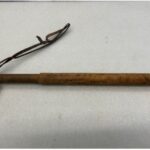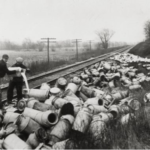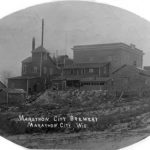In the aftermath of the 1929 Wall Street Market Crash and the subsequent Great Depression, Wisconsin farmers struggled to meet the costs of production associated with dairy commodities. As a tool to improve their standard of living, some of Wisconsin’s farmers turned to forming cooperatives to help improve their quality of life. These cooperative structures also served as an instrument of political advocacy for farmers’ rights. During this time of hardship, the Consolidated Badger Cooperative formed in Shawano which sought to represent the collective grievances of famers, producers, and shippers in Shawano County.
As Shawano County farmers on average received less money for milk than the Wisconsin average due to difficulties competing with industrial and urban producers, they saw the need to diversify their facilities and collectively strive for a higher standard of living. In October 1929, the “Perfect Seed Circle” met in the basement of the Shawano County Courthouse, laying down the foundation for the Badger. Under the direction of Shawano County extension agent George F. Baumeister, the organization first officially met in December 1930. The name Consolidated Badger Cooperative came from the mission of the organization. The group strove to “consolidate” small dairy production plants into several larger ones, while ownership still collectively and “cooperatively” belonged to its members. The organization was based in Shawano County, but it desired to eventually expand operations throughout Wisconsin, hence the “Badger.” The strategy of consolidating small plants into larger ones aimed to remove the burden on independent rural farmers, by providing them with shared resources that allowed them to compete with urban producers. This also doubled as a political advocacy group that strove for farmers rights and collective bargaining.
The Badger’s first plant opened in April 1931, and received 3,000 pounds of milk. By the end of the year, Badger plants were receiving 120,000 pounds of milk a day. By 1932, the organization had 851 members and the Badger possessed multiple plants. However, the average price received for milk by Shawano County farmers was still 12 cents per hundredweight less than the state average. While the Badger certainly made progress and laid down the groundwork to improve the conditions of Shawano County’s farmers, these consolidation efforts were not enough.
As anger and desperation brewed amongst farmers, strikes broke out throughout Wisconsin in 1933. Led by the Wisconsin Cooperative Milk Pool, farmers attempted to create a shortage of milk by disrupting milk production and shipments. Many local, statewide, and national cooperatives and organizations supported the Milk Pool during this time. However, the Badger did not. Led by President Oscar Holm, the Badger knew that discontinuing production meant that its members would no longer receive any revenue. This was an incredibly contentious decision, as at the time of the strikes, about 52 percent of Shawano County’s labor force worked in agriculture. To Shawano County’s rural independent producers who disagreed with Holm and the Badger’s stance, the strikes provided an opportunity to makes their voices heard.
On May 12, the Milk Pool initiated the second strike of the year. Strikes and picketing broke out across the state, and due to the disadvantaged nature of Shawano County farmers, the town of Shawano became a site of one of the most militant clashes of the Milk Strikes. An estimated 5,000 farmers and workers blocked the roads into Shawano, attempting to dump any milk shipments entering or exiting the town. Due to the Badger’s decision to continue production, picketing began outside of the Badger headquarters and affiliated plants. On May 15, it became clear to state officials that Shawano County Sherriff Otto Druckery could not repel the strikers attempting to raid the Badger production plants and creameries. Governor Albert G. Schmedeman personally removed Druckery from power, denouncing his ineptitude and failure to protect private property. Durckery was replaced by Sheriff Oscar Dettman. Governor Schmedeman and Adjunct General Ralph M. Immell activated three regiments of the Wisconsin National Guard and deployed them to three of Wisconsin’s counties.
To support Dettman and his deputies, 600 Guardsmen deployed to Shawano. The Guardsmen assisted local law enforcement, as well as 800 special deputies. The unrest in Shawano lasted for about 6 days, with deputies successfully breaking up the picketing each day that it occurred. The Guard utilized violent means to suppress the strikes and clubbed striking farmers with nightsticks. This caused dozens of injuries, including a fractured skull on one of the striking farmers. The Milk Pool officially ended the strike at midnight on May 19 after Schmedeman agreed to create a farmer-led agricultural committee to discuss solutions to fix milk pricing. However, special deputies and Guardsmen remained in Shawano for the next 24 hours and patrolled the roads to ensure that picketing would not continue.
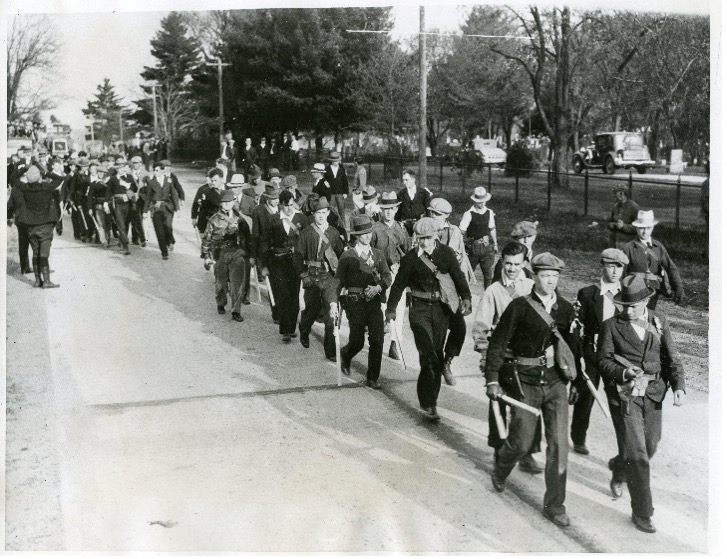
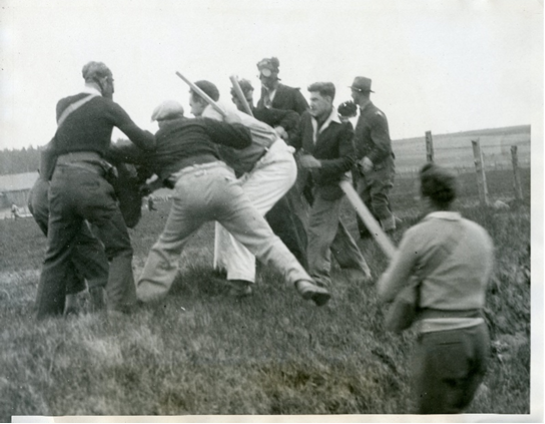
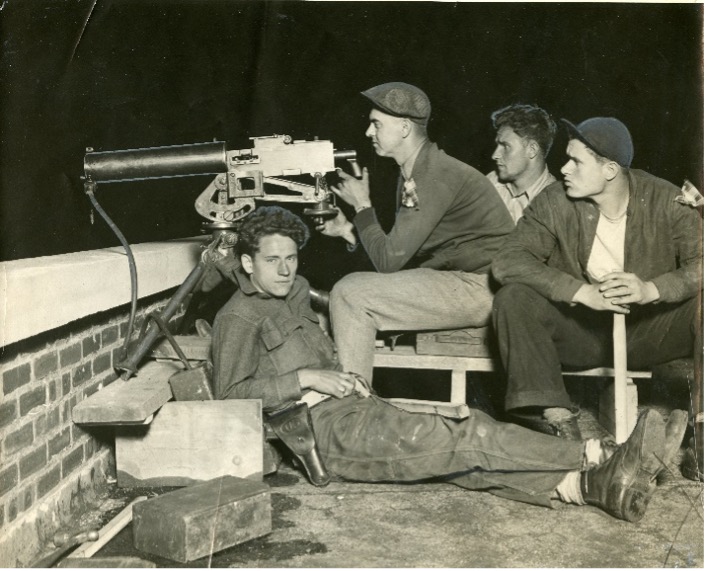
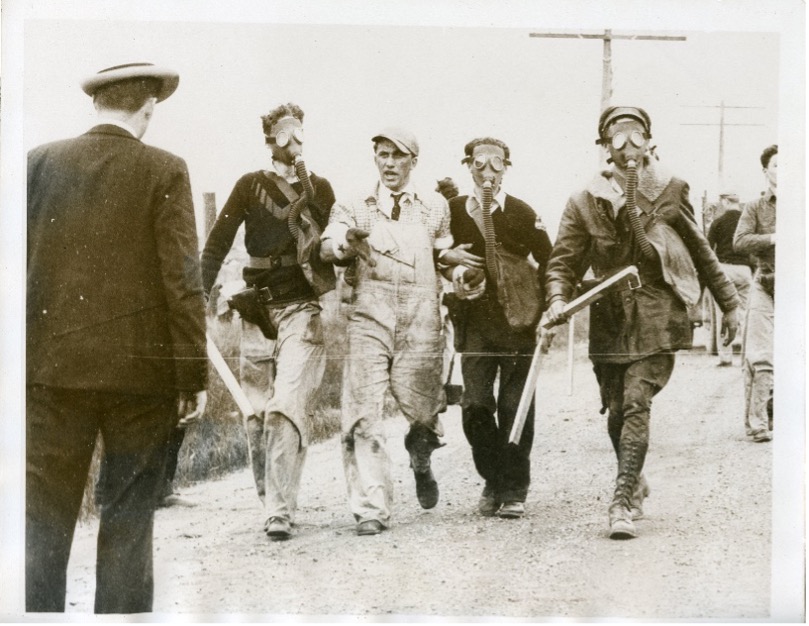
By the end of the unrest, deputized Guardsmen captured and arrested over 150 pickets, with dozens of injuries on both sides. During the clashes, Guardsmen and deputies detained all strikers in a large machine shed that was part of the County Highway Department. Guarded by dozens of deputies and a mounted machine gun, the deputies held most of the prisoners for over 24 hours on charges of unlawful assembly, inciting a riot, or criminal conspiracy. Law enforcement freed most strikers on May 23, and depending on the severity of their offenses, some were released unconditionally without consequences, some were fined, and others had to face trial.
In the aftermath of the strikes, the local newspapers described Shawano as having the appearance of a war zone. While the strikes briefly increased the price of milk throughout Wisconsin, low prices would return in the following months. However, the Badger continued working on behalf of its farmers in Shawano. While the price received by Shawano County farmers was 12 cents per hundredweight below the state average in 1929, by 1936, the average pay for Badger members was 12 cents above the state average. By 1937, the Badger became the largest cooperative manufacturer of dairy products in the state. The Shawano Milk Strike displays the divisive nature of the 1933 Wisconsin Milk Strikes, pitting working-class farmers against each other, all of whom had similar goals to improve their standard of living. While the Badger chose not to close production during the strikes, their cooperatively owned facilities improved the quality of life for Shawano County farmers in the following years.
Written by Nick Censoprano, June 2023.
SOURCES
Consolidated Badger Cooperative (Shawano, Wis.). “Consolidated Badger Cooperative, Shawano, Wisconsin, Records, 1928-1983.” Wisconsin Historical Society, Division of Library, Archives, and Museum Collections. Finding Aid: http://digital.library.wisc.edu/1711.dl/wiarchives.uw-whs-gb0104
Lang, J.H. “The Early Struggles of a Wisconsin Cooperative.” Hoard’s Dairyman 126, No. 19 (1981).
“Captives Freed.” The Oshkosh Daily Northwestern. 23 May 1933.
“Clashes Continue In Strike Zones.” The Sheboygan Press, 18 May 1933.
“Deputies Remain On Guard in Strike Torn Shawano Area.” The Racine Journal-Times, 19 May 1933.
“Schmedeman Refuses to Oust Shawano Milk Strike Sheriff.” The Wisconsin State Journal. 8 July 1933.
“To Try Shawano Sheriff on Inefficiency Charge.” The Racine Journal-Times, 7 June 1933.
